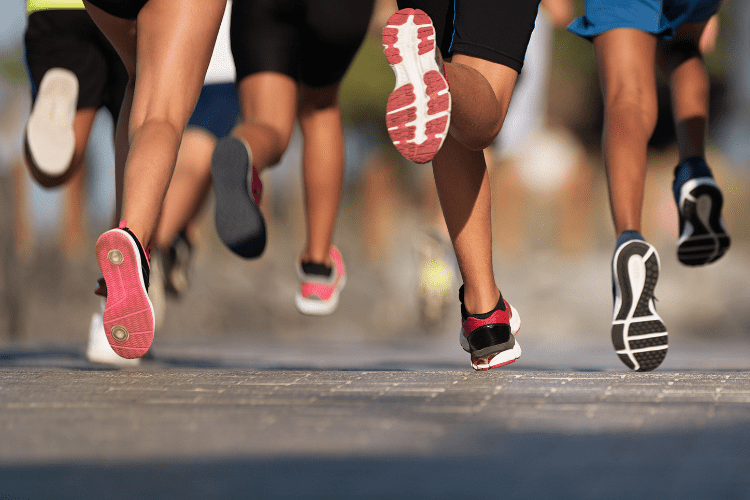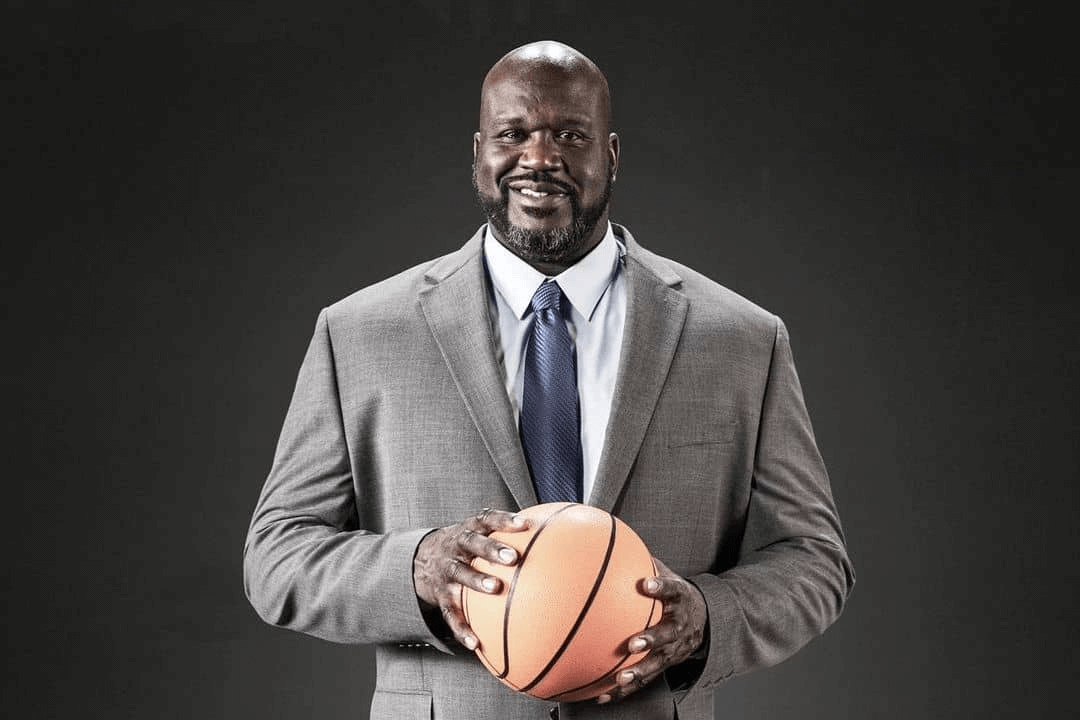You might be thinking to yourself…
“How can basketball shoes NOT be good for running?!”
Doesn’t half the game run around to an open spot on the basketball court, or run back on defense to make sure the player you’re guarding doesn’t get an easy bucket?
The answer to that is a definite yes. If you’re not running during the game, you’re probably not doing yourself or your team a lot of good.
Then again, how does it make sense that basketball sneakers (a product made for a game based on running) might not be good enough for jogging around?
In this article, we’ll look at basketball shoes’ viability as running shoes, and whether it makes sense to wear your hoops while trying to improve your level of cardio conditioning.
Key differences between basketball shoes and running shoes
Before we get into the differences between the two types of shoes, it’s important to think about what makes the game of basketball different from traditional running.
Despite the tongue and cheek rhetoric in the introduction to this piece, basketball involves much more than just running. There are a lot of sudden changes in the sport that require players to stop on a dime, go from right to left, shift weight from one foot to the other, and so on.
By design, there are obstacles in your way when trying to get to the hoop, and you want to be a formidable barrier against an offensive player who isn’t going to make your life easy by standing still. In addition to moving straight ahead or backtracking, you’ll also be moving laterally quite a bit to cut certain corners.
If you’re going to run on a treadmill or outside, the nature of the movements doesn’t quite mimic the movements that basketball players consistently make. Runners don’t plant hard on one foot at the track at your local park to reverse course and run in the opposite direction.
While there may be some contour deviations when running on asphalt, dirt, rubber, or concrete, there are very few scenarios where a runner simulates running around a screen that is for them on an imaginary basketball baseline. Runners also don’t jump in the air to fly for a rebound or block a shot.
Read also: 11 Best Basketball Shoes for Plantar Fasciitis
With that frame of reference in mind, delving into the unique characteristics of a pair of basketball shoes versus a running shoe now makes more sense.
Basketball shoes have a little extra weight and tend to suffocate your foot. This is absolutely by design, as basketball shoes are made with ankle support and the ability to burst into short sprints as a primary consideration.
They’ve undergone a bit of a transformation in the last decade or so, as companies now feature mid and low-top basketball shoes as well as classic high tops. With that said, basketball shoes still come in higher than running shoes, and they are also designed to perform well in the traction and grip department.
On the other hand, running shoes tend to be much cheaper from a cost perspective, and they are also much more lightweight and flexible. This is quite logical considering that runners who want to run long distances don’t necessarily want to feel trapped by something that swallows their entire foot.
Running shoes usually have a lot of flexibility, but the construction changes when we talk about running on some alternative surfaces. A long-running shoe is generally recommended for runners who take their talents off the road.
This family of shoes tends to come closer to the characteristics of a basketball shoe but is still not quite approximate. Soot running shoes are a little sturdier than their basic running shoe counterparts, and have increased traction to stay firm in the presence of mud and gravel.
Benefits of wearing basketball shoes for running
If we look in the mirror and reflect on our training patterns with scout-worthy honesty, most of us can probably admit that we’ve gone for a run or three in traditional basketball shoes. It may not make sense for people to switch to a different pair of sneakers during a run when they know their basketball kicks are sufficiently broken in.
The mental calculation of it makes sense. If a player’s comfort with a pair of basketball shoes grows with each time they are plucked from the rack, it is difficult to emotionally turn away from them, even in a different context.
For short distances, wearing basketball shoes can be a good option. With the amount of cushioning basketball shoes that tend to appear, they can provide a pleasant level of comfort on a morning scamper or evening jog.
Even though they tend to be a little more clumsy than running shoes, the padding of basketball shoes can motivate a person to run a little more than they originally planned. This bonus bit of practice can add up over time, helping players reach a level of fitness that exceeds that of their competitors.
Many people like to vary their workouts, which can be an indirect invitation to bring out their basketball shoes. Some programs will include straight-line running, but may also include squats, wind sprints, burpees, and other types of routine exercises that cross-train your body.
If you expect to do something to this effect, your basketball shoes can handle the intensity of such a workout better than your average running shoes.
Also read: The Pros & Cons of Wearing Basketball Shoes for Tennis
Disadvantages of wearing basketball shoes for running
Your foot won’t fall off if you ever decide to go for a run in basketball shoes. Just look at the abundance of people running around your park in nicer weather, and there’s an excellent chance you’ll find someone jogging in basketball kicks.
We touched on it earlier, but basketball shoes are not designed for long-distance running and can be a hindrance if you want to complete an extended route from your house to the sporting goods store in the next town.
There is a greater likelihood of fatigue and potential moisture build-up in your basketball shoes if you take them long-term. Running shoes generally cover your foot but not much of your ankle, which tends to allow air to better surround your pavement-pounding hooves.
In addition to the reasons mentioned above, scientific reasons also support runners not deploying basketball shoes. During a straight-line run, most of the impact on landing is concentrated at the forefoot and heel.
Running shoes are generally much better equipped to absorb shock in these specific areas. There is some overlap in basketball as a player runs the floor to convert a layup or block a shot, but relatively speaking, basketball shoes don’t do the best job of protecting the wearer against consistent impact in that aspect not to protect.
In some cases, running in basketball shoes can cause nagging injuries such as plantar fasciitis. Regardless of the activity an athlete participates in, plantar fasciitis is an absolute bummer of aid, as more basic activities like walking around your house can suddenly become a more painful task.
The risk of potentially irritating the plantar fascia may not be a wise gamble, considering the debilitating effect it can have on your workout and your regular life.
So… Are basketball shoes a good substitute for running shoes?
All in all, basketball shoes are an acceptable alternative to running shoes. They are not necessarily the preferred choice, given some shortcomings of basketball shoes compared to other options, but going for a walk in them is not going to be an extremely bad decision.
Keep in mind that the mileage you put on basketball shoes for traditional cardio exercises can lead to their death a little faster than when used strictly on a hardwood floor. In addition to the various benefits of wearing running shoes for traditional running, this can be another factor to think about when examining the choices on your shoe rack.




